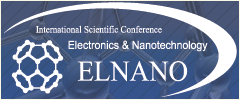Новини світу мікро- та наноелектроніки
I am attempting to make a racing datalogger
 | I got into kart racing a few years ago and got pissed off at how expensive dataloggers were($500++), so I went to build one, only to find no ones ever really released many if any public libraries for gps lap timing. So I made one, and then I needed a logger for it, so I made that, then I needed a case, and made that too, and recently cive-coded a data-viewer but that's another rant (20yoe swe) Well all of that took a year to perfect, the laptiming is within 0.002s of the official laptiming, I can do track/course selection, laps, pace, and even split-timing on-device. Now sure, it logs data, but it's not a datalogger without more data. Most other sensors are piss easy to implement... Engine rpm tho... My god what a nightmare I'm a software guy, never made hardware before, barely have any idea what I'm doing but by God I'm making progress. Right now I'm dealing with SD cards being corrupted so I finally gave in and bought a scope to learn more, managed to build a drastically cleaner circuit than I had before and I got some hope. (Yes vibration kills, but this is a new problem with adding the tachometer, and I haven't even gotten to testing that on track yet) (I must do this weird capacitive dance like the commercial ones do, but I also don't have one to take apart so we're gonna just keep winging it baybe) No I don't want to talk about how much money I've spent at this point, I'm making a damned open source, and cheap, datalogger so help me God I've got GitHub links for everything but don't wanna get yelled at dropping links in a first post or something I probably should have went to school for this but hey, I've gotten this far on nothing but hopes and dreams [link] [comments] |
start of my fpga programing journey a 1 bit alu on t41 thinkpad
 | submitted by /u/Green-Pie4963 [link] [comments] |
EEVblog 1729 - AC Basics Tutorial Part 7: AC Ohms Law
Electronic circuit simulation engine for education
 | Hi Reddit, While reading the Charles Petzold's great vulgarization book CODE : The Hidden Language of Computer Hardware and Software I told myself that it would be a cool educational project to animate the book schemas to vulgarize how computers work down to the transistor level. So I created an electronic circuit engine to help discovering how electronics and computers work. You can check the demo here. This is a starting open source project and all comments and feedback are very welcomed ! [link] [comments] |
Weekly discussion, complaint, and rant thread
Open to anything, including discussions, complaints, and rants.
Sub rules do not apply, so don't bother reporting incivility, off-topic, or spam.
Reddit-wide rules do apply.
To see the newest posts, sort the comments by "new" (instead of "best" or "top").
[link] [comments]



